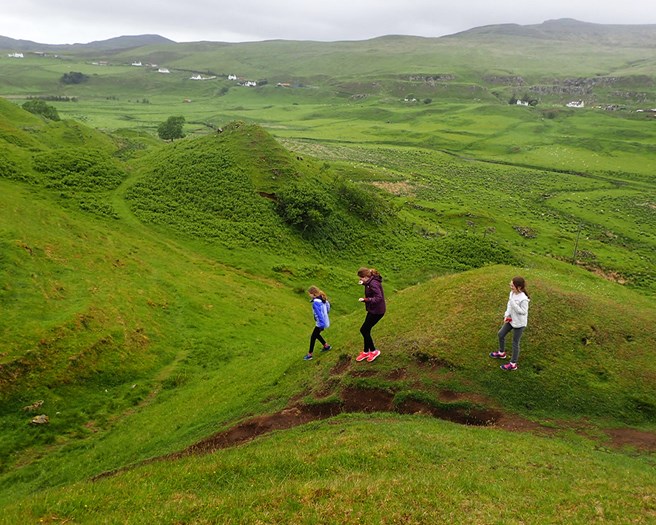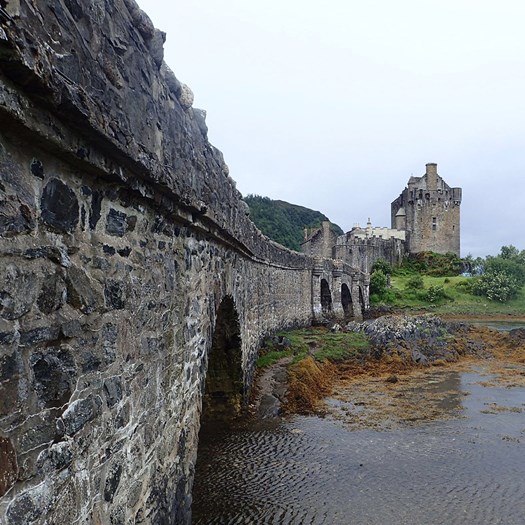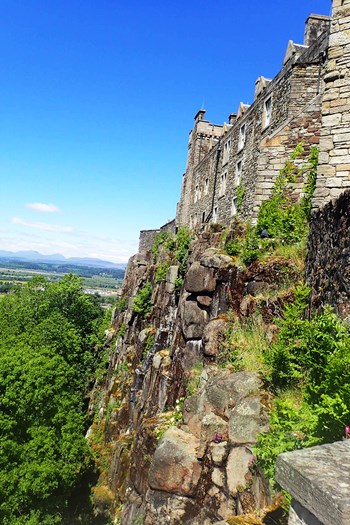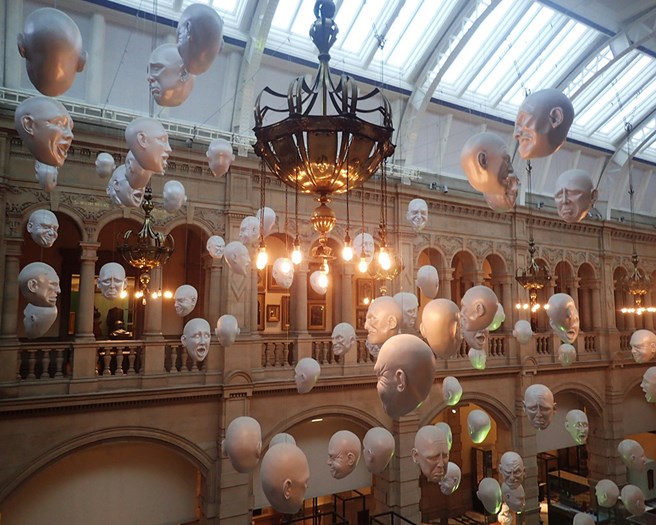ISLE OF SKYE, SCOTLAND - Forget putting bread crumbs in my children’s pockets. I haven’t time to even think of warding off sprites before the kids are off and running into the otherworldly reaches of the Fairy Glen.
I glimpse at them briefly — three dancing girls — communing wildly with this exotic landscape so ethereal one actually expects to find the wee people cavorting amongst the jagged green peaks, ponds and valleys in the hills just outside Uig on the Trotternish Peninsula.
“It’s a magical place,” says Ian Deveney, the kilted, bearded affable Inverness Tours guide who has deposited us here during a tour of romantic, rugged, remote Skye, the largest island in the Inner Hebrides.
We’d come to Scotland so I could school my children on clans and castles and Culloden — the language, legends and lore that formed so much of my childhood on Cape Breton, Nova Scotia’s Celtic heartland.
But first, there are pressing matters.
“Mommy, are you chasing sheep?” my kids yell incredulously as I, too, fall under the glen’s mystical spell, climbing a small hill to edge my camera ever closer to a small flock.

Above: Fairy Glen is indeed a magical place where kids can dance in the emerald valley.
Skye is a revelation. Light changes the landscape. Colours change in the mist. Cloud cover comes and goes, unveiling something new to see, the Old Man of Storr, the red and black Cuillin Hills.
In between lapping up Deveney’s folklore and fascinating history, we stop to sample fine craft ale at the Isle of Skye Brewing Co., drive up the hairpin, crazy-narrow mountain road to the wondrous scenery of the Quiraing, feast on fresh fish takeaway on the pier in Portree, and hear about the Vikings, who believed the island was engulfed in cloud and part of the sky, hence its name.
Of course, we hear of the Jacobites, those followers of King James, largely Highland clans, wanting to restore religious tolerance and the exiled branch of the house of Stuart to the throne.
The ill-fated 1746 Battle of Culloden – located just east of Inverness – led by Bonnie Prince Charlie nearly ended a way of life for the clans. In Skye, visitors see ruined stone foundations of croft houses abandoned after the Highland Clearances of the 1800s. The clearances drove thousands — my ancestors included — from the island, taking with them their language and traditions.
Deveney drives us to Kilmuir Cemetery, where an imposing Celtic cross marks the final resting place of Jacobite heroine Flora MacDonald, who dressed Prince Charlie as her maid Betty Burke and helped him escape after the Battle of Culloden. (“Speed, bonnie boat, like a bird on the wing, onward the sailors cry! Carry the lad that’s born to be king over the sea to Skye.”)


“What if the MacDonalds of Sleat and MacLeods of Dunvegan had gotten involved in the uprising?” muses Deveney on two big but feuding clans who opted not to join the cause.
At Stirling Castle, located northeast of Glasgow, my kids fall captive to more Scottish lore. Stirling was the last castle ever attacked in Britain and is also Scotland’s most besieged castle.
“One half of Scotland, the Lowlands is before us. One half of Scotland is behind us, the Highlands. Stirling Bridge was the only way you went into the Highlands. If you held the castle, if you held the bridge, you basically held Scotland,” says another guide named Charlie, a passionate ambassador of the castle.
Charlie points in the distance to the towering monument to a Scottish hero, William Wallace.
“That’s where Wallace stood in 1297 when he had his victory against (England’s) Edward I. And a mile and a half over there is Bannockburn, where in 1314 Robert the Bruce had his great victory.”
My kids are captivated by the impressive castle itself where trumpets once sounded on the second storey balcony of the Great Hall and Mary Queen of Scots stepped into the room warmed by five massive fireplaces to start the lavish celebration for the baptism of her son James VI – a party that did not stop for three days.
Walking from the castle to the town of Stirling below, visitors can step into the medieval Church of the Holy Rude, where the coronation of James VI took place, and later where fiery orator John Knox preached while James’ mother, Mary Queen of Scots, languished in prison.
We spend two nights in Inverness, capital of the Scottish Highlands, a pretty city of bridges, stone buildings, churches and stylish restaurants clustered around the River Ness.
Just a 15-minute drive east is Culloden, site of the last battle to take place on British soil on April 16, 1746.
Birdsong is constant on the bleak, boggy battlefield. I stop to run my hands over the grave marker for Clan Cameron. My 12-year-old shines and polishes my surname inscribed in the centuries-old stone. We wander the moorland where the Duke of Cumberland — Prince Charles’ first cousin — and his troops took less than an hour to decimate the Highland army. About 1,600 are buried on this site.
Back in Inverness, we digest the poignant afternoon over heaping plates of fish and chips and pints of ale and lemonade at lively Encore, a bustling pub filled with the Friday after-work crowd.

Above: Kelvingrove Museum in Glasgow is one of the most interesting in Europe.
As much as Scotland holds its past close to its chest, it’s very much a modern-day country and we delight in these glories, too, on a 10-day road trip, dipping into edgy, delightful Glasgow to shop up and down Buchanan and Sauchiehall streets and take in the many stunning free museums like the Kelvingrove Art Gallery and Museum. We walk the Royal Mile in beautiful Edinburgh, swept away by buskers, busyness, and gorgeous architecture.
On our last day, the countryside beckons so we sign on for Discover Scotland’s Oban, Western Highlands, Lochs, Castles & Glencoe day tour. As we roll past clan lands and castles toward the thriving seaport of Oban, we stop at Dunbarton Castle, where Wallace was imprisoned before being transported to England to stand trial for treason. We roam the grounds of posh Inverary Castle, built not as a fortification like other Scottish castles, but to show off Campbell of Argyll’s status.
Then it’s into Scotland’s arguably most famous glen.
“It wouldn’t be Scottish history without a sad story behind it,” driver-guide Stuart says as he masterfully retells the tragic 1692 Massacre of Glencoe, in which the Campbells, who after spending 10 days as guests of the MacDonalds, acted on orders of King William “to put all to the sword and leave none alive called MacDonald.”
As the haunting lament, “O cruel is the snow that sweeps Glencoe and covers the grave O Donald,” plays on the stereo, my eyes mist with first glimpse of Glencoe.
But what of my kids? Was I successful? Did they soak in Scottish history?
“Well, you saw where your ancestors came from,” I mention to my youngest on the plane home.
“Wait,” she exclaims. “Does that mean I’m a Jacobite? Deep down I’m a Jacobite! And we lost Culloden!”